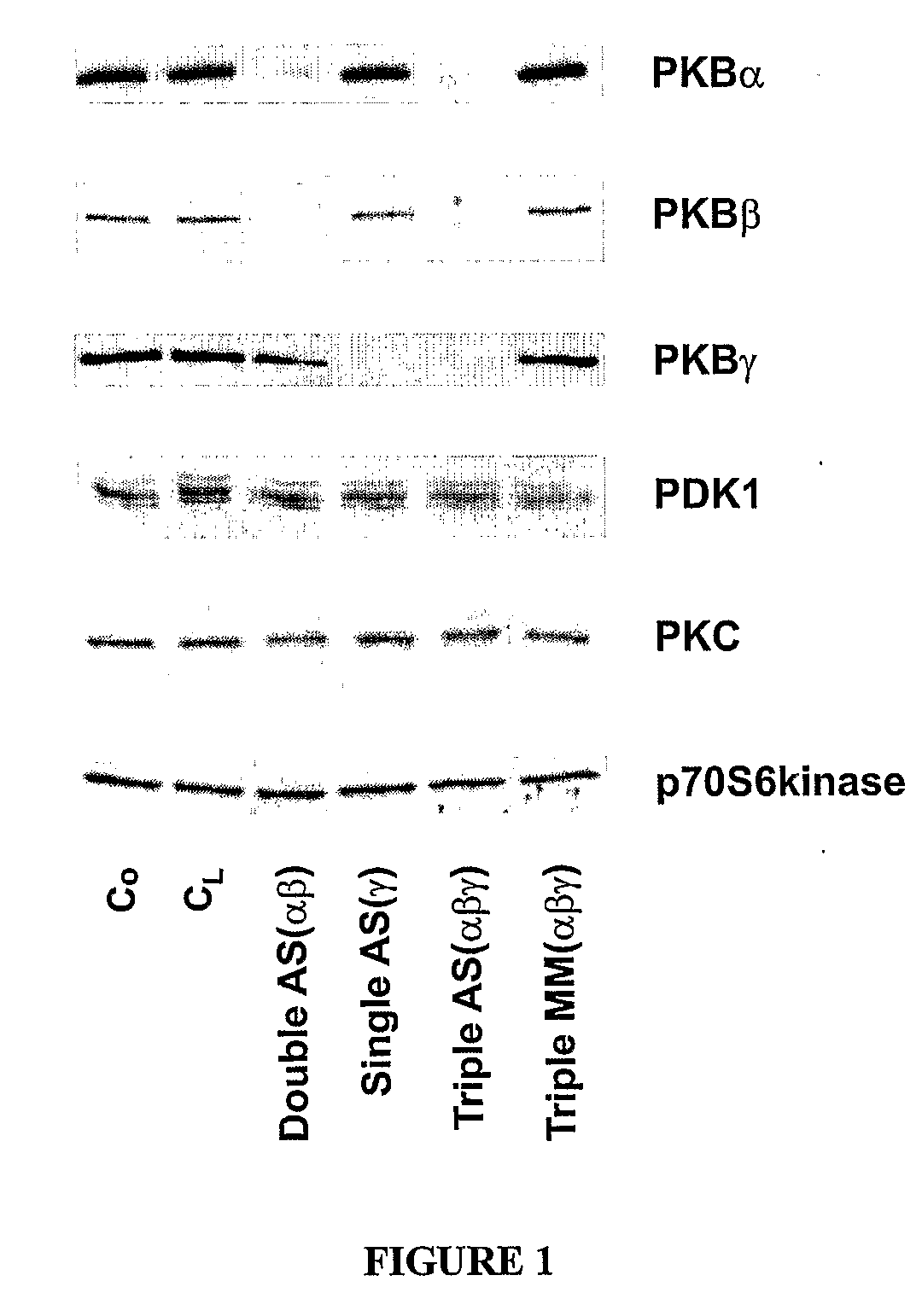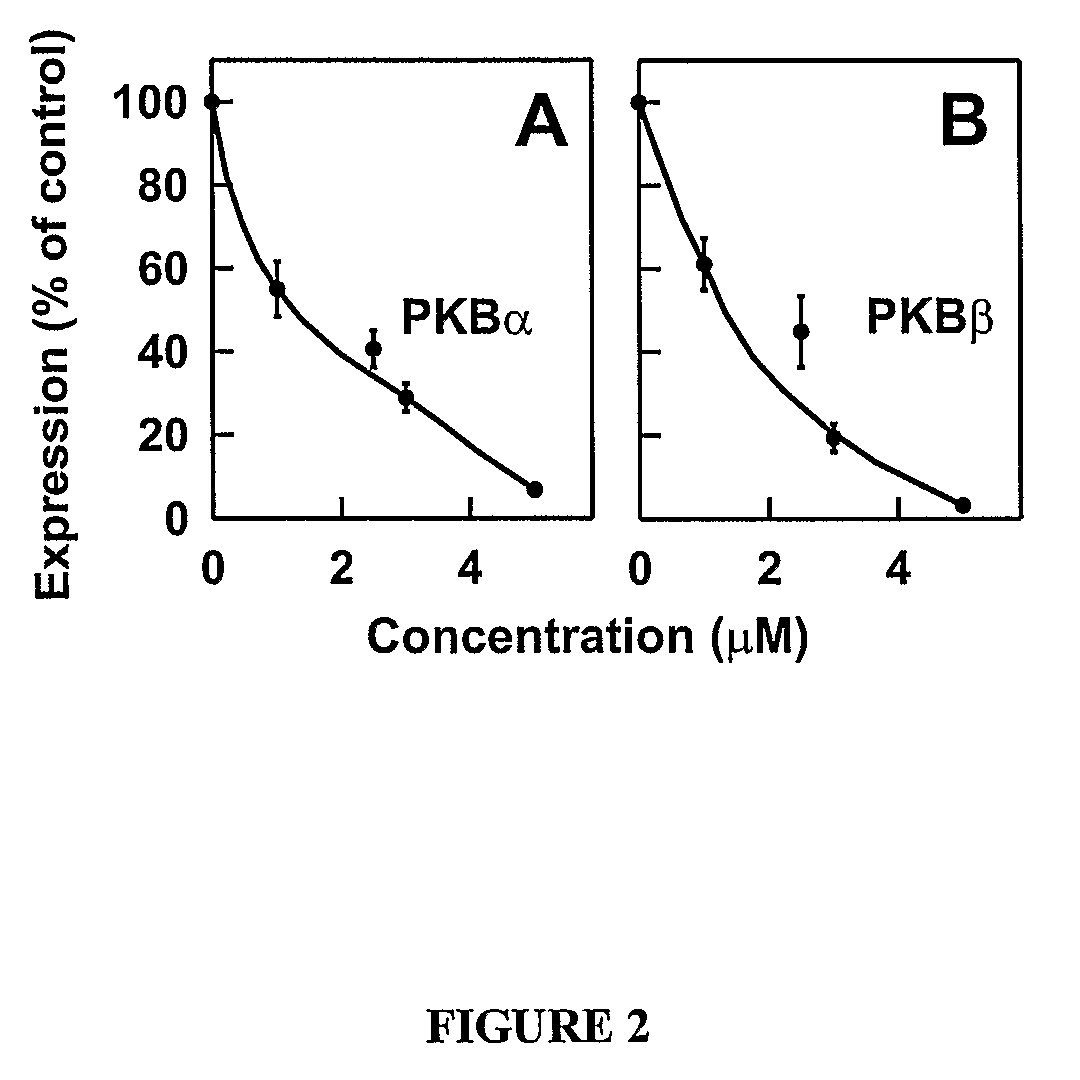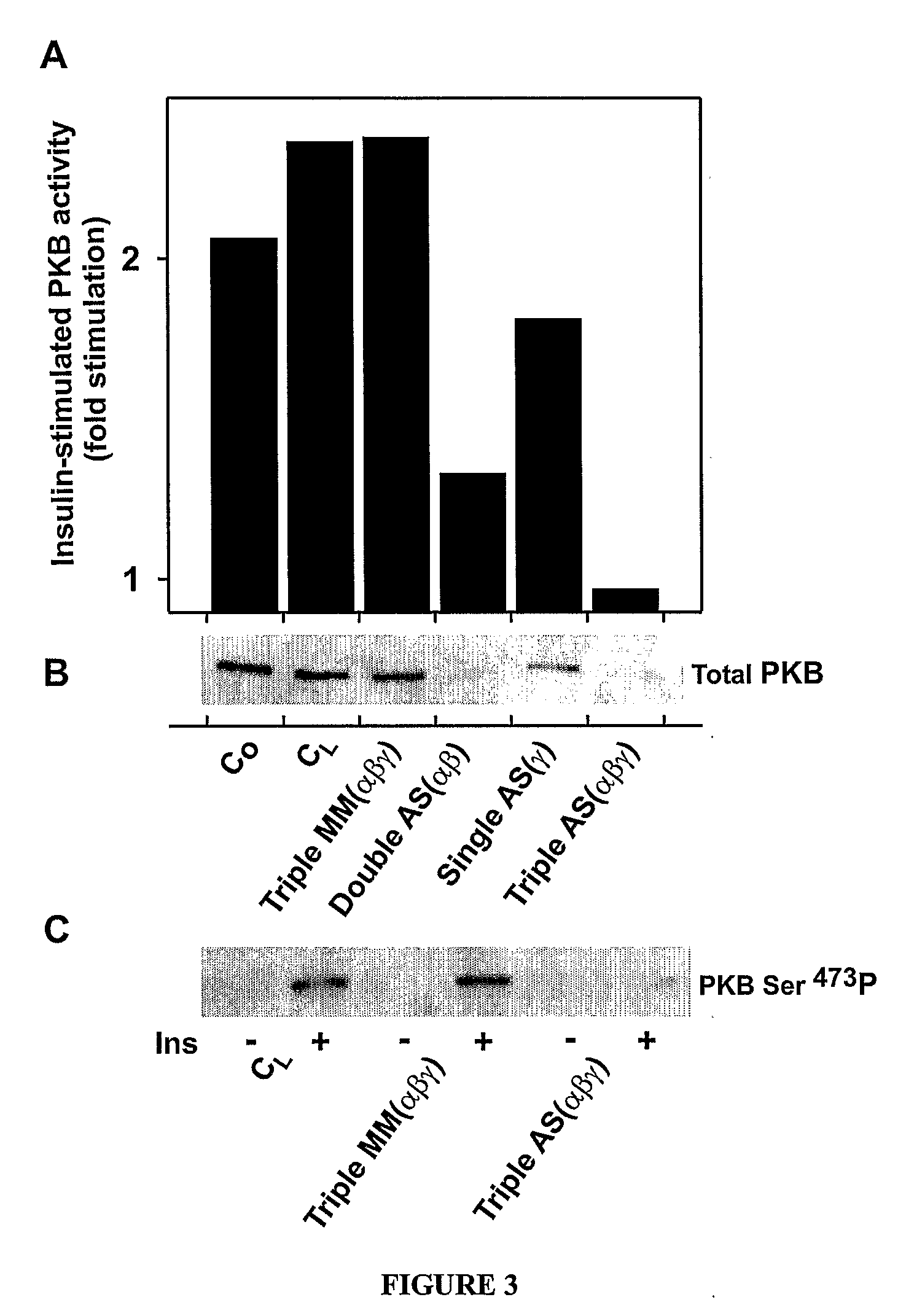Antisense oligonucleotides against protein kinase isoforms alpha, beta and gamma
an anti-kinase and beta technology, applied in foreign genetic material cells, biochemistry apparatus and processes, sugar derivatives, etc., can solve the problems that small-molecule inhibitors of pi3k or pkb have not been developed for clinical trials, and achieve high selectivity
- Summary
- Abstract
- Description
- Claims
- Application Information
AI Technical Summary
Benefits of technology
Problems solved by technology
Method used
Image
Examples
example 1
Materials and Methods
[0168]Cell Culture and Oligonucleotide Treatment
[0169]The effect of antisense compounds on target nucleic acid expression can be tested in a variety of cell types. This can be routinely determined using Western Blot. The following cell types are provided for illustrative purposes, but other cell types can be routinely used.
HEK Cells
[0170]Human embryonic keratinocytes (HEK) were obtained from the American tissue culture Collection. HEK cells were routinely maintained in DMEM:HAM (50:50) (Gibco) formulation.
Treatment with Antisense Compounds
[0171]Lipofectamine 2000™ (Invitrogen) or Genejuice™ (Novagan) was diluted in serum-free medium (dilution 40 μl / ml) and pre-incubated at room temperature for 5 minutes. An equal volume of oligonucleotide (diluted in serum-free DMEM / HAM) was then added and incubation continued for a further 15 minutes. Cells were washed with serum-free medium and 200 μl of the oligonucleotide mixture layered onto the cells together with a furthe...
example 2
Antisense-Mediated Depletion of PKB with Triple Antisense Oligonucleotides Potently and Specifically Kills MCF-7 Human Breast Cancer Cells
[0194]MCF-7 cells were grown to near confluence and then treated with or without oligonucleotides, as described elsewhere. Photographs were taken at 120 h after starting treatment. Cells were treated with: (i) double antisense oligonucleotides against PKB α and β (DAS α,β—SEQ ID Nos: 4 and 22); (ii) triple antisense against PKB α, β and γ (Triple MM α, βγ—SEQ ID Nos: 4, 22 and 44); and (iii) triple α, β, γ mismatch control oligonucleotides (Triple MM α, βγ—SEQ ID Nos: 58, 59 and 57). Controls with (i) CO, control untreated cells; and (ii) CL, Lipofectamine-only treated cells were also performed.
[0195]The results obtained showed substantial cancer cell death with DAS a, P and Triple AS α, β, γ. Mismatch control oligonucleotides had no effect, as did the Lipofectamine control.
Time Course of Death of MCF-7 Human Breast Cancer Cells by PKB Antisense O...
PUM
| Property | Measurement | Unit |
|---|---|---|
| Fraction | aaaaa | aaaaa |
| Fraction | aaaaa | aaaaa |
| Inhibition | aaaaa | aaaaa |
Abstract
Description
Claims
Application Information
 Login to View More
Login to View More - R&D
- Intellectual Property
- Life Sciences
- Materials
- Tech Scout
- Unparalleled Data Quality
- Higher Quality Content
- 60% Fewer Hallucinations
Browse by: Latest US Patents, China's latest patents, Technical Efficacy Thesaurus, Application Domain, Technology Topic, Popular Technical Reports.
© 2025 PatSnap. All rights reserved.Legal|Privacy policy|Modern Slavery Act Transparency Statement|Sitemap|About US| Contact US: help@patsnap.com



